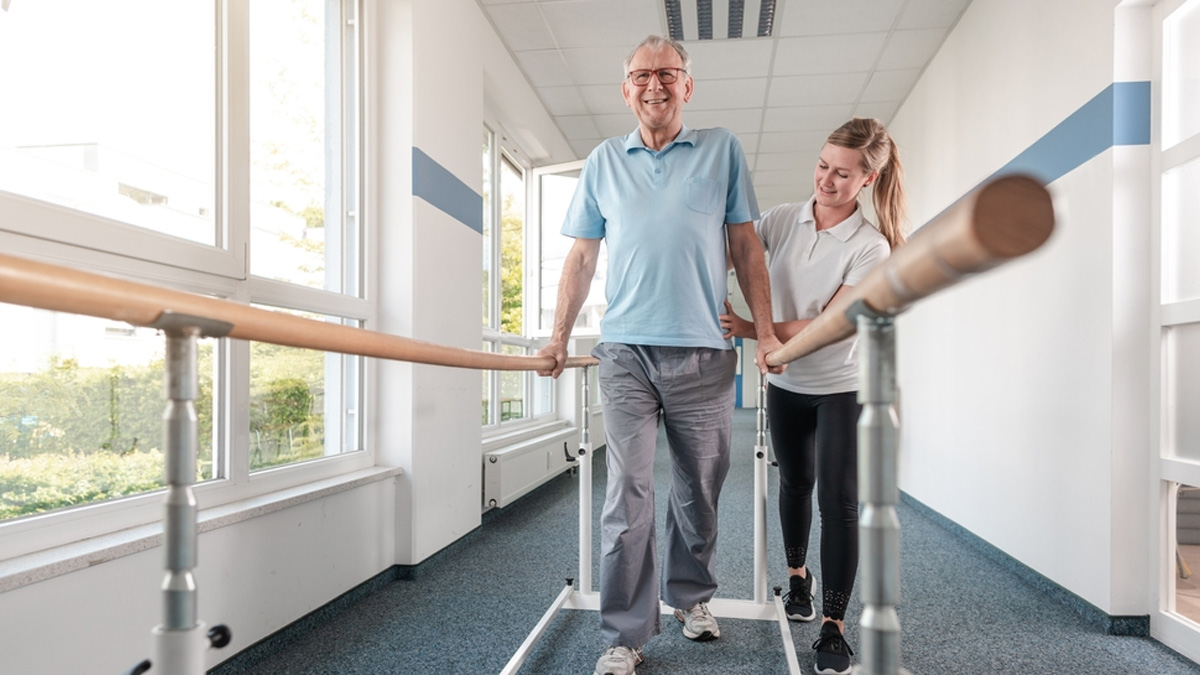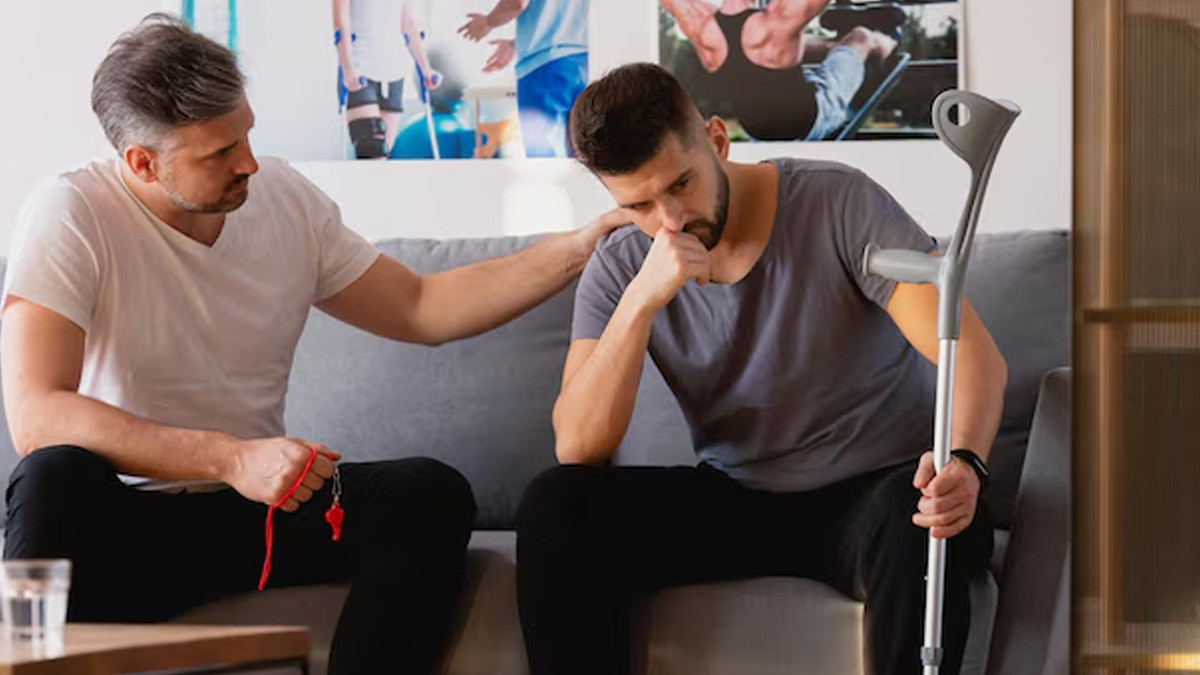
Physiotherapy has changed a lot in recent years, moving from a passive treatment style to one that encourages patients to take an active role in their recovery. Instead of just receiving treatments, patients are now more involved in exercises and self-care to help them heal. This new approach gives people more control over their recovery and leads to better results. However, it also comes with some challenges. We spoke to Dr Apoorva Shrivastava, Founder, Resolve360, who listed the benefits of active physiotherapy and how to handle the obstacles that come with it.
Table of Content:-
According to a study published in the American Heart Association/American Stroke Association (AHA ASA) Journal, active physiotherapy refers to any type of exercise performed by the patient, either with or without direct supervision from the physiotherapist, that requires the patient's voluntary effort. Examples include functional task training, circuit class therapy, aquatic therapy, or gait training.
Benefits of Active Physiotherapy

Patient Empowerment
One of the primary advantages of active physiotherapy is its emphasis on patient empowerment. By involving patients more directly in their treatment, this approach fosters a sense of responsibility and control over their recovery process.
“Patients are encouraged to take an active role in their rehabilitation, performing therapeutic exercises and activities both during therapy sessions and at home. This increased involvement often leads to improved adherence to treatment plans and better long-term outcomes,” said Dr Shrivastava.
Functional Strength and Mobility for Daily Activities
Active physiotherapy also promotes the development of functional strength and mobility that directly translates to daily activities. Rather than relying solely on passive treatments like manual therapy or modalities, active approaches incorporate therapeutic exercises and movements that mimic real-life situations. This functional focus helps patients regain independence more quickly and reduces the risk of reinjury by preparing the body for the demands of everyday life.
Sustainable and Long-lasting Results

“Moreover, active physiotherapy tends to yield more sustainable results. By teaching patients how to manage their condition and providing them with therapeutic exercises to continue their rehabilitation independently, the benefits of treatment extend far beyond the clinic,” added Dr Shrivastava. This approach not only improves physical outcomes but also enhances patients' overall well-being and quality of life by boosting their confidence and self-efficacy.
Evidence-Based Practice in Active Physiotherapy
The active approach aligns well with current evidence-based practice, which increasingly supports therapeutic exercises and movement-based interventions for a wide range of conditions. Research has shown that active treatments can be more effective than passive ones for many musculoskeletal disorders, chronic pain conditions, and neurological impairments. This scientific backing has contributed to the widespread adoption of active physiotherapy methods across the profession.
Challenges in Implementing Active Physiotherapy
Changing Patient Expectations

Despite its many benefits, the shift to active physiotherapy is not without challenges. One of the primary hurdles is changing patient expectations. Many individuals seeking physiotherapy treatment come with preconceived notions based on traditional passive approaches. Dr Shrivastava said, "They may expect to receive hands-on treatments or modalities and be initially resistant to the idea of taking a more active role in their rehabilitation. Physiotherapists must effectively communicate the benefits of active treatment and educate patients on the importance of their participation."
Tailoring Active Interventions for Diverse Populations
Another challenge lies in tailoring active interventions to meet the needs of diverse patient populations. While some individuals may readily embrace an active approach, others, such as those with severe pain, limited mobility, or low motivation, may struggle to engage fully. Physiotherapists must be skilled in adapting their treatment strategies to accommodate varying levels of ability and readiness for active participation.
Shifting the Therapist’s Role
The transition to active physiotherapy also requires a shift in the therapist's role. Rather than being the primary agent of treatment, physiotherapists must become educators, motivators, and coaches. This change can be challenging for some practitioners comfortable with traditional hands-on techniques. It requires developing new skills in patient education, behaviour change strategies, and exercise prescription.
Time Constraints in Healthcare Systems
Time constraints in healthcare can make it challenging to implement active physiotherapy effectively. Active approaches require more time for patient education and exercise instruction, which can be difficult to accommodate within standard appointment durations. Physiotherapists may need longer or more frequent sessions to fully implement active treatment strategies.
Overcoming Challenges and Moving Forward
Continuing Education for Physiotherapists

To address these challenges and fully realise the benefits of active physiotherapy, a multifaceted approach is necessary. Continuing education for physiotherapists is crucial to ensure they have the skills and knowledge to implement active treatments effectively. This includes training in motivational interviewing, behaviour change techniques, and advanced exercise prescription.
Improving Patient Education
"Patient education is equally important. Physiotherapists must develop clear and compelling ways to communicate the benefits of active treatment and set appropriate expectations from the outset. This may involve using visual aids, providing written materials, or incorporating technology to engage patients in their rehabilitation process," Dr Shrivastava.
Evolving Healthcare Systems and Policies
Healthcare systems and policies may need to evolve to support active physiotherapy approaches. This could include adjustments to appointment scheduling, reimbursement structures, and outcome measures to reflect the value of active interventions.
Collaborating with Other Healthcare Providers
Collaboration between physiotherapists and other healthcare providers is also essential. By working closely with physicians, occupational therapists, and other members of the healthcare team, physiotherapists can ensure a consistent message about the importance of active participation in rehabilitation.
Bottomline
Dr Shrivastava concluded, “The shift from passive to active physiotherapy represents a significant advancement in the field. While it brings numerous benefits in terms of patient outcomes, empowerment, and long-term health, it also presents challenges that require ongoing attention and adaptation. By addressing these challenges head-on and continuing to refine active treatment approaches, the physiotherapy profession can further enhance its effectiveness and play an even more vital role in improving patients' lives.”
[Disclaimer: This article contains information provided by an expert and is for informational purposes only. Hence, we advise you to consult your own professional if you are dealing with any health issues to avoid complications.]
Also watch this video
How we keep this article up to date:
We work with experts and keep a close eye on the latest in health and wellness. Whenever there is a new research or helpful information, we update our articles with accurate and useful advice.
Current Version